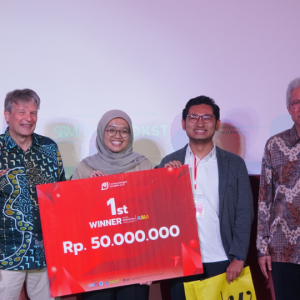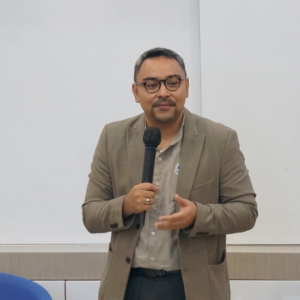Finance Director of PT Suzuki Indomobil Motor, Ernawan Dwi Hanartyo, stated that production cost efficiency is an art. It plays a crucial role in helping companies balance operational expansion and effective cost management.
According to Ernawan, cost efficiency is often overlooked when companies are focused on growing and expanding their businesses. He highlighted this during a guest lecture delivered to MBA students at the SBM ITB on Monday (10/3).
One company that has successfully implemented production efficiency is Tesla. The Gigafactory, Tesla’s large-scale production facility, demonstrates how economies of scale can lead to significant cost savings when managed effectively.
By centralizing the production of batteries and vehicles in high volumes at a single production and distribution center, Tesla has successfully reduced its cost per unit. This efficiency is illustrated by the downward-sloping segment of the long-term average total cost curve, which shows that increasing output can lower average costs.
However, Ernawan emphasized that efficiency is not solely about size; the right production strategy is equally important. Tesla’s success results from combining high production volume with advanced automation—proof that technology is a key driver of efficiency.
He cautioned that operational efficiency cannot be achieved simply by continually increasing production scale. There is an ideal threshold, the minimum efficient scale, where cost efficiency is maximized. Expanding beyond this point may not yield additional benefits and could be counterproductive.
“Just because you can expand doesn’t mean you should,” Ernawan noted.
He also stressed the importance of human resources in achieving production efficiency. Team and internal motivation, he said, are just as vital as automation and technological tools.
Consistently high product quality doesn’t happen by chance—it results from cost control, detailed production processes, and strong teamwork driven by shared goals. While technology can significantly boost productivity, it is ultimately the people behind the machines who determine the success of the production process.
Ernawan also underscored the need for integration between business principles and engineering disciplines. He believes that synergy between these two areas is essential for companies to achieve true economic efficiency.
He added that Technological innovation will only deliver maximum impact if paired with the right business strategies. Striking a balance between expansion and optimizing existing systems is critical. He also warned that expansion can introduce new challenges that may hinder efficiency if not managed properly.
Lastly, Ernawan reminded the audience that the business environment, industry dynamics, and market conditions constantly evolve. Companies must remain adaptive, agile, and consistently vigilant in monitoring their cost structures in response to technological





